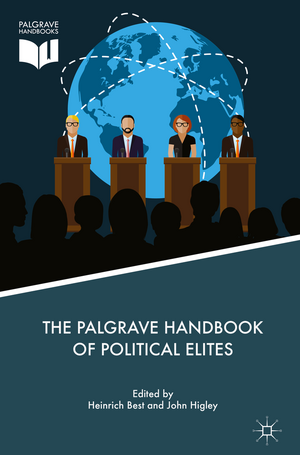The Palgrave Handbook of Political Elites
Editat de Heinrich Best, John Higley Maurizio Cotta, Jean-Pascal Daloz, Ursula Hoffmann-Lange, Jan Pakulski, Elena Semenovaen Limba Engleză Hardback – 23 noi 2017
Preț: 1842.31 lei
Preț vechi: 2246.72 lei
-18% Nou
Puncte Express: 2763
Preț estimativ în valută:
352.57€ • 361.06$ • 293.28£
352.57€ • 361.06$ • 293.28£
Carte tipărită la comandă
Livrare economică 18 martie-01 aprilie
Preluare comenzi: 021 569.72.76
Specificații
ISBN-13: 9781137519030
ISBN-10: 1137519037
Pagini: 666
Ilustrații: XXI, 698 p. 12 illus., 4 illus. in color.
Dimensiuni: 155 x 235 mm
Greutate: 1.18 kg
Ediția:1st ed. 2018
Editura: Palgrave Macmillan UK
Colecția Palgrave Macmillan
Locul publicării:London, United Kingdom
ISBN-10: 1137519037
Pagini: 666
Ilustrații: XXI, 698 p. 12 illus., 4 illus. in color.
Dimensiuni: 155 x 235 mm
Greutate: 1.18 kg
Ediția:1st ed. 2018
Editura: Palgrave Macmillan UK
Colecția Palgrave Macmillan
Locul publicării:London, United Kingdom
Cuprins
Introduction to the Palgrave Handbook of Political Elites; Heinrich Best and John Higley.- Chapter 1: Introduction to Section I: The Development of Elite Theory; Jan Pakulski.- Chapter 2: Classical Elite Theory: Pareto and Weber; Jan Pakulski.- Chapter 3: Continuities and Discontinuities in Elite Theory; John Higley.- Chapter 4: Political Elites and Democracy; András Körösényi.- Chapter 5: Theory-Based Typologies of Political Elites; Ursula Hoffmann-Lange.- Chapter 6: Introduction to Section II: Research Methods for Studying Elites; Elena Semenova.- Chapter 7: Methods of Elite Identification; Ursula Hoffmann-Lange.- Chapter 8: Surveying & Observing Political Elites; Juan Rodríguez-Teruel and Jean-Pascal Daloz.- Chapter 9: Temporal Methods in Political Elite Studies; Sebastian Jäckle and Matthew Kerby.- Chapter 10: Analyses of Elite Networks; Franziska Barbara Keller.- Chapter 11: Introduction to Section III: Patterns of Political Elites; John Higley.- Chapter 12: Pre-Modern Power Elites: Princes, Courts, Intermediaries; Jeroen Duindam.- Chapter 13: Political Elites in the Middle East and North Africa; Clement Henry.- Chapter 14: Political Elites in South Asia; Philip Oldenburg.- Chapter 15: Political Elites in Southeast Asia; William Case.- Chapter 16: Political Elites in Sub-Saharan Africa; Jean-Pascal Daloz.- Chapter 17: Political Elites in Latin America; Cristóbal Rovira Kaltwasser.- Chapter 18: The Political Elite in Post-Soviet Russia; Peter Rutland.- Chapter 19: The PoliticalElite in China: A Dynamic Balance between Integration and Differentiation; Cheng Li.- Chapter 20: Political Elites in the West; John Higley.- Chapter 21: Introduction to Section IV: Elite sectors: Differentiation and Integration; Heinrich Best.- Chapter 22: Representative Elites; Heinrich Best and Lars Vogel.- Chapter 23: Executive Elites; Luca Verzichelli.- Chapter 24: Non-Elected Political Elites in EU; Niilo Kauppi and Mikael Rask Madsen.- Chapter 25: Economic Elites; Michael Hartmann.- Chapter 26: Media Elites; Eva Mayerhöffer & Barbara Pfetsch.- Chapter 27: Models of Elite Integration; Fredrik Engelstad.- Chapter 28: Introduction to Section V: Elite Attributes and Resources; Jean-Pascal Daloz & Ursula Hoffmann-Lange.- Chapter 29: The Personality Attributes of Political Elites; Gian Vittorio Caprara & Jo Silvester.- Chapter 30: Political and Social Backgrounds of Political Elites; Daniel Gaxie.- Chapter 31: Political Elites and Symbolic Superiority; Jean-Pascal Daloz.- Chapter 32: Norms and Orientations of Political Elites; Bernhard Weßels.- Chapter 33: Power Networks; David Knoke.- Chapter 34: Introduction to Section VI: Elite Dynamics and Dilemmas; Maurizio Cotta.- Chapter 35: Elite Circulation and Stability; Luca Verzichelli.- Chapter 36: Democratization: The Role of Elites; Philippe C. Schmitter.- Chapter 37: Sub-National Political Elites; Filippo Tronconi.- Chapter 38: Elites or Leadership? Opposite or Complementary Paradigms?; Jean Blondel.- Chapter 39: Political Elites Beyond The Nation State; Maurizio Cotta.
Recenzii
“The introduction addresses the definition of political elites and changes in the scholarly treatment of political elites since the mid-twentieth century. … The book includes with an extensive, cross-referenced index. This is a scholarly enterprise. The writing level reflects the target audience, college students and above. Highly recommended.” (American Reference Books Annual ARBA, June, 2018)
Notă biografică
John Higley is Emeritus Professor of Government and Sociology at the University of Texas at Austin, USA. From 2001-2012, he chaired the International Political Science Association’s Research Committee on Political Elites. His most recent book is The Endangered West: Myopic Elites and Fragile Social Orders in a Threatening World (2016).
Heinrich Best is Senior Professor of Sociology at the Friedrich-Schiller-University in Jena, Germany. Since 2012 he has chaired the International Political Science Association’s Research Committee on Political Elites. His most recent book is Political Elites in the Transatlantic Crisis (2014, with J. Higley)
Textul de pe ultima copertă
This handbook presents a comprehensive view of the current theory and research surrounding political elites, which is now a pivotal subject for academic study and public discourse. In 40 chapters by leading scholars, it displays the field’s richness and diversity. The handbook is organized in six sections, each introduced by a co-editor, focusing on theories about political elites, methods for studying them, their main structural and behavioral patterns worldwide, the differentiation and integration of political elite sectors, elite attributes and resources, and the dilemmas of political elites in this century. Forty years since Robert Putnam’s landmark Comparative Study of Political Elites, this handbook is an indispensable resource for scholars and students engaged in the study of this vibrant field.
Caracteristici
Provides the first comprehensive handbook on political elites and their consequences for politics Offers a broad, international approach that covers political elitism worldwide Unites the research on political elites found within the fields of political science, sociology, political economy, international relations, social psychology, political anthropology and public policy
